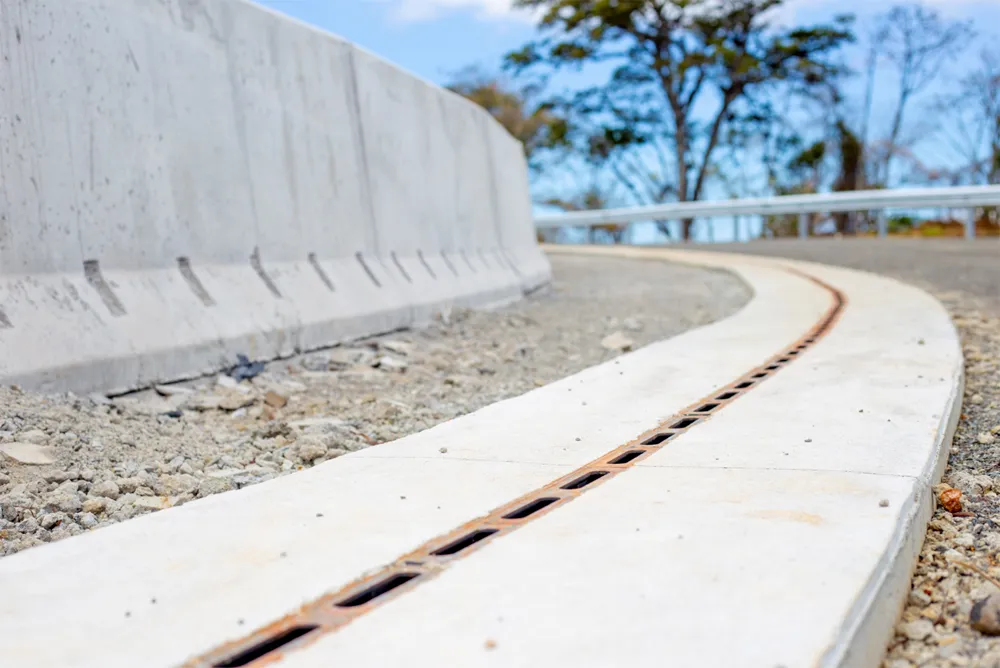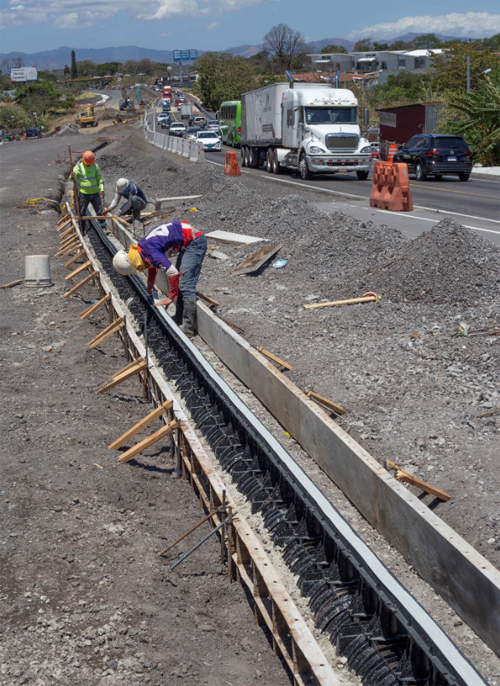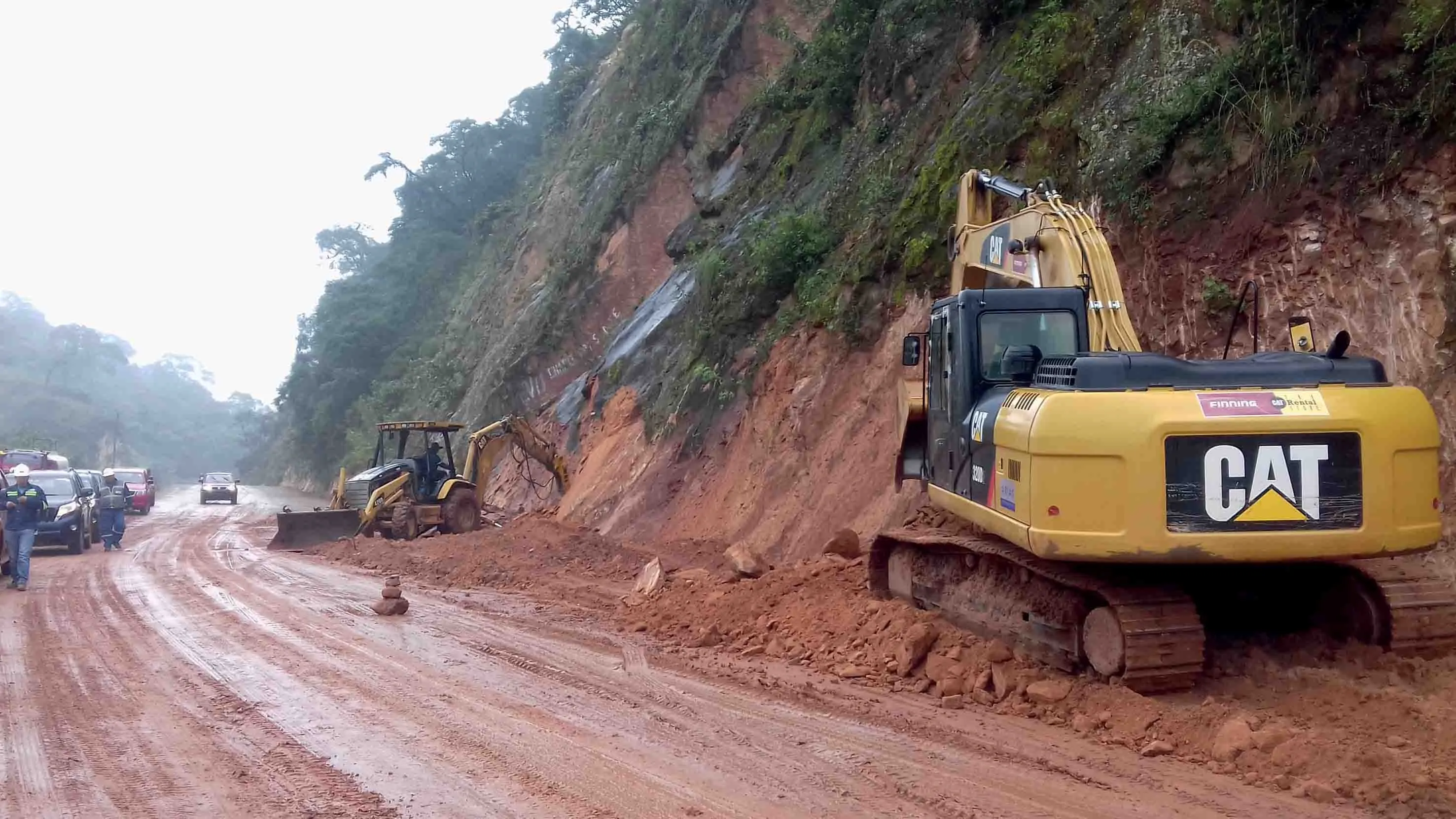
The route is important and is the northern segment of the Pan-American Highway, which crosses Costa Rica and connects the Central American nations. The route runs through the casco central districts of capital San Jose, linking the city centre with San Jose International, Airport Tobias Bolanos.
In all 2,900m of the ACO Qmax Neo product have been installed on 10 access roads. The ACO Qmax Neo product has been installed on the inside curve to prevent flooding and vehicles aquaplaning during the seasonal four month period of heavy rainfall. The opposite road section drains into an open pitch. The F900 grating was chosen because the design meets the required intake area and the design can be integrated into road surface.
Contractor Pedregal Constructora installed the new Qmax 300 Neo products using concrete to form the structural support around the pre-formed units. The pavement beam feature allowed the positioning of reinforcement and also assisted the flow of concrete through the top part of the product during installation. This job was made easier through the use of an installation jig, which held the product in place.

The ACO DRAIN Qmax Neo is a new member of the ACO Qmax family which now includes the range of sizes of 150mm, 225mm, 300mm, 350mm up to the egg-shaped 550mm, 700mm and 900mm units. The larger sizes offer a substantial retetention volume and collected rainwater can be stored temporarily and then discharged into the sewers system in a controlled manner during heavy rainfall events.
Intergrated gaskets make the channel watertight in accordance with EN 1433. All sizes can be used with tailormade inlet shafts and inspection elements to suit the requirements of the project. For road sections without a camber, this can be delivered using special height adapters to achieve a slope within each channel section.
For more information please email [email protected]
Sponsored content produced in association with ACO Surface Water Management









